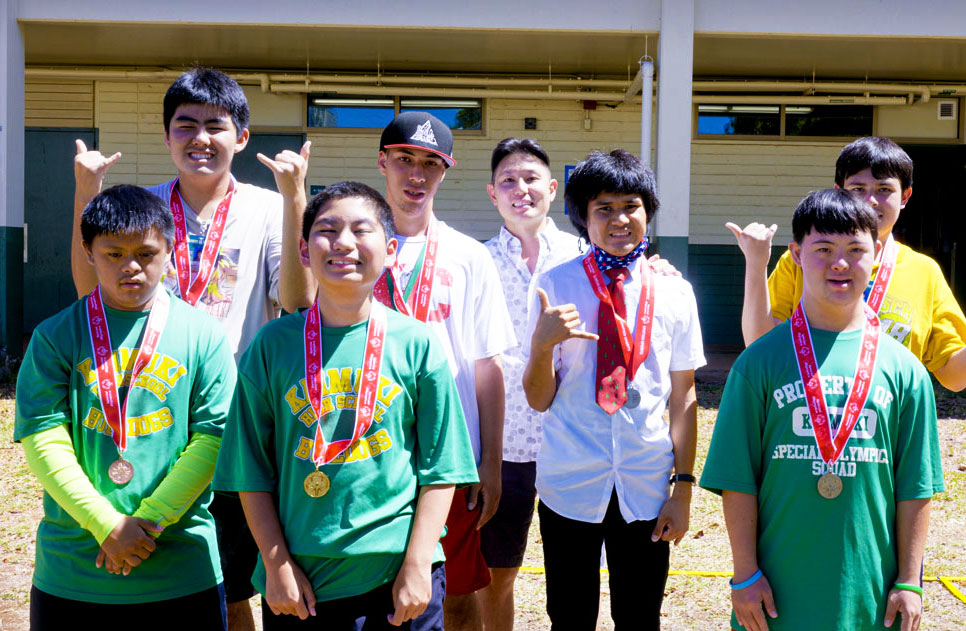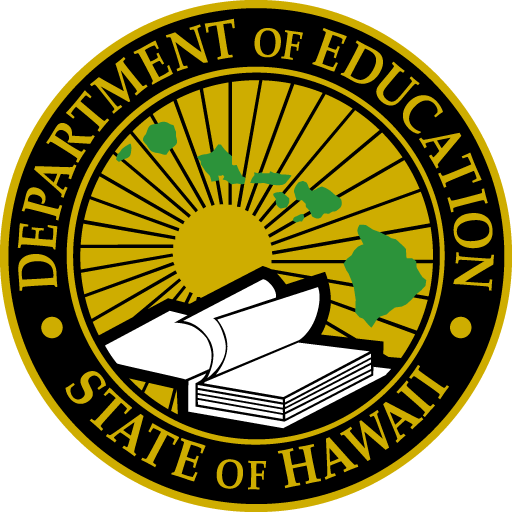The Hawaiʻi State Department of Edukasyon (HIDOE) provides services to children ages 3 through 21, residing in Hawaiʻi, who are eligible for espesyal na edukasyon at mga kaugnay na serbisyo. Special education is specially designed instruction, related services, and other supplementary aids to meet your child’s unique needs—at no cost to parent(s).
pangkalahatang-ideya
Special education refers to a range of services provided your child with disabilities to improve their educational outcomes. It is specially designed instruction to meet the unique needs of your child with disabilities. Special education may include, but is not limited to, academic services, speech-language services, psychological services, physical and occupational therapy, counseling services, and parent education. In addition, espesyal na edukasyon services are provided at no cost to parent(s). Find out if Espesyal na Edukasyon Is it for your child? (PDF).
Special education services are made available to any student — ages 3 through 21 — who demonstrates a need for specially designed instruction after an eligibility determination. An evaluation will determine the nature and extent of the student’s needs. Evaluations are separate assessments that may include: academic performance, communication skills, general intelligence, health, vision, hearing, social and emotional status, and motor abilities. If your child is eligible for espesyal na edukasyon, services are provided through an Individualized Edukasyon Program (IEP).
The federal Individuals with Disabilities Edukasyon Improvement Act of 2004 (IDEA) and state regulations require the HIDOE to provide a free appropriate public education (FAPE), which includes a continuum of services for your child who is eligible for espesyal na edukasyon at mga kaugnay na serbisyo.
Pagsusuri at Kwalipikasyon
Special education is intended for students who have disabilities that cause difficulty in learning and need specialized instruction.
Evaluation is defined as the procedures used to determine if your child has a disability and the nature and extent of the need for espesyal na edukasyon and related services. This process helps identify learners who are eligible for espesyal na edukasyon and related services by determining the presence of a disability and the need for espesyal na edukasyon services. There are specific timelines that teams must follow for the evaluation process.
Appropriate referrals for espesyal na edukasyon begins after supportive instructional practices have occurred and the student needs far more than the classroom teacher can provide through general education support. For example, a student who has significant academic and/or behavioral challenges and continues to display a lack of progress despite increasing levels of intervention.
Determination of Disability for Espesyal na Edukasyon
Ang mga koponan ay dapat:
- Magsagawa ng pagsusuri
- Kumpletuhin ang three-prong test
- Consider your child’s educational progress and the interaction between the disability
- Determine the educational impact of that disability
- Decide the need for espesyal na edukasyon
This important distinction highlights that the disability label alone does not prompt a determination of eligibility for espesyal na edukasyon. In the context of espesyal na edukasyon eligibility, the disability label has no standing without reference to impaired educational progress as a result of the disability.
Three-Prong Test
Each prong must be met before the team can determine that if your child is eligible for espesyal na edukasyon.
- Prong 1: Kapansanan – May kapansanan ba ang iyong anak?
- Prong 2: Masamang epekto – Is the disability adversely affecting your child’s involvement and progress in general education?
- Prong 3: Kailangan – Does your child need espesyal na edukasyon and related services due to their disability?
Individualized Edukasyon Programa
An Individualized Edukasyon Program (IEP) is a written statement about the educational program for your child with a disability. It serves as a management tool to ensure that your child receives the needed espesyal na edukasyon and related services. It can also serve as an evaluation tool when used to determine the extent of their progress toward accomplishing projected goals.
Kasama sa bawat IEP ang:
- A statement of your child’s present levels of academic achievement and functional performance
- Isang pahayag ng mga taunang layunin, kabilang ang mga panandaliang layunin sa pagtuturo
- A statement of the specific espesyal na edukasyon and related services to be provided
- The extent that your child will be able to participate in regular educational programs
- Ang mga inaasahang petsa para sa pagsisimula ng mga serbisyo at ang inaasahang tagal ng mga serbisyo
- Angkop na pamantayan sa layunin at mga pamamaraan ng pagsusuri at mga iskedyul para sa pagtukoy, sa hindi bababa sa isang taunang batayan, kung ang mga layunin ay nakakamit
Beginning at age 14 (or younger if determined appropriate by the IEP team), the IEP shall include a statement of the transition service needs of your child—under the applicable components of the their IEP—that focuses on their courses of study (such as participation in a vocational educational program).
Magsisimula nang hindi lalampas sa unang IEP na magkakabisa kapag ang iyong anak ay naging 16 taong gulang (o mas bata kung natukoy na naaangkop ng pangkat ng IEP), ang IEP ay dapat na kasama ang:
- Naaangkop na masusukat na mga layunin pagkatapos ng sekondarya batay sa pagtatasa ng transition na naaangkop sa edad
- Ang mga serbisyo sa paglipat (kabilang ang mga kurso ng pag-aaral) na kailangan upang tulungan ang mag-aaral sa pag-abot sa mga layuning iyon
- Mga pagtatasa sa paglipat na naaangkop sa edad batay sa mga indibidwal na pangangailangan ng iyong anak na gagamitin upang matukoy ang naaangkop na masusukat na mga layunin pagkatapos ng pangalawang sekondarya
- Magsisimula nang hindi lalampas sa isang taon bago maabot ng iyong anak ang edad ng mayorya sa ilalim ng batas ng estado, (18 taong gulang sa Hawaiʻi), ang kanilang IEP ay dapat magsama ng isang pahayag na ang mag-aaral ay ipinaalam sa kanyang mga karapatan sa ilalim ng Bahagi B ng IDEA, kung mayroon man, na ililipat sa iyong anak sa pag-abot sa edad ng mayorya.
Ang mga sumusunod kailangang dumalo ang mga kalahok sa isang pulong ng IEP (PDF):
- A representative of the public agency, other than your child’s teacher, who is qualified to provide, or supervise the provision of, espesyal na edukasyon
- The child’s teacher
- Isa o pareho ng mga magulang/legal na tagapag-alaga
- Ang iyong anak, kung naaangkop
- Iba pang mga indibidwal sa pagpapasya ng magulang o ahensya
Mga Pagpupulong ng IEP
Ang mga pagpupulong ng IEP ay kailangang idaos kahit taon-taon. Depende sa mga pangangailangan at pag-unlad ng iyong anak, ang mga pagpupulong upang suriin at baguhin ay maaaring idaos nang mas madalas.
Bagama't ang mga pagpupulong ng IEP ay karaniwang pinasimulan at isinasagawa ng paaralan, angkop para sa mga magulang na humiling ng isang pulong sa IEP kapag naniniwala kang ang iyong anak ay hindi umuunlad nang kasiya-siya o sa tingin mo ay may problema sa kasalukuyang IEP.

MAY kapansanan ba ang aking anak?
Paghahanap ng Bata is HIDOE’s process of identifying, locating and evaluating children and youth who have been identified as or are suspected of having a disability and may need espesyal na edukasyon and related services. If you suspect your child may have a disability, we are here to help. Matuto pa
